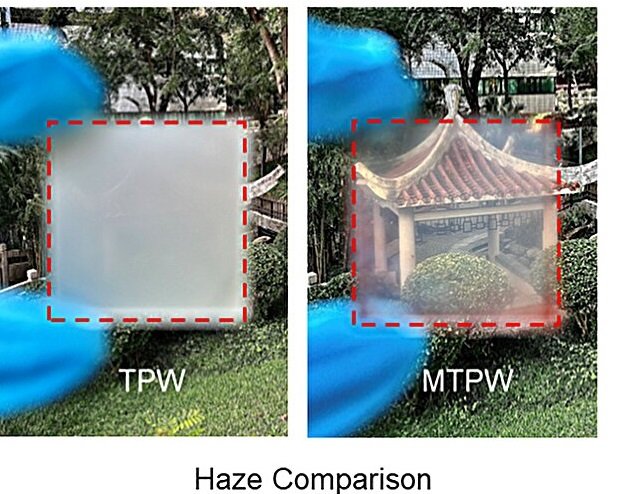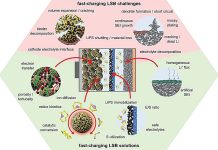
Researchers from City University of Hong Kong (CityUHK) have pioneered a groundbreaking smart window technology that draws inspiration from medical masks.
Their new design significantly enhances the durability and clarity of thermochromic perovskite, a material used in energy-saving smart windows.
Published in Nature Communications, their study could revolutionize the use of smart windows in green buildings.
Thermochromic perovskite is known for its ability to change color based on temperature, making it ideal for smart windows that adjust light transmission to save energy.
However, this material has struggled with issues like poor weather resistance, susceptibility to water damage, and a “frosted glass” effect due to high optical haze.
These challenges have limited its practical application until now.
Professor Edwin Tso Chi-yan from the School of Energy and Environment at CityUHK and his team tackled these problems head-on.
They designed a smart window that mimics the layered structure of a medical mask, significantly improving the material’s performance.
The innovative “mask-inspired” window consists of three layers: a bottom layer of thermochromic perovskite, a middle layer of Perhydropolysilazane (PHPS), and a top layer of hydrophobic SiO2 nanoparticles.
This setup not only enhances the window’s waterproof qualities but also reduces surface roughness and light scattering.
As a result, optical haze dropped dramatically from 90% to 30%, clearing up the view through the windows.
This smart window can withstand harsh weather conditions and prevent water damage, making it much more reliable than previous versions.
In tests, the mask-inspired windows showed superior performance, maintaining their optical qualities for over a month without degradation, which is a significant improvement over traditional windows.
One of the key features of this new design is its ability to control how water vapor interacts with the perovskite layer, preserving the material’s color-switching capabilities and extending its lifespan.
Additionally, the smart window achieves an impressive 83% light transmittance in its cold state and can modulate solar energy by 24%, meaning it effectively controls how much heat and light pass through.
The researchers also highlighted that the mask-inspired structure allows the thermochromic perovskite to be applied directly onto flexible PET films. This method avoids the need for additional protective encapsulation, cutting down on costs and complexity.
By integrating these smart windows into buildings, simulations suggest that energy consumption could be reduced by up to 10% annually, demonstrating not only their practicality but also their potential to contribute to energy efficiency in the building sector.
This innovative approach promises to make smart windows a more viable option for eco-friendly construction projects in the future.



